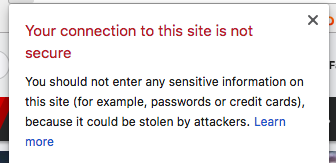At first, creating a website or blog to share your passion for fashion and your unique take on style can seem out of reach. But, with the right tools, turning your hobby into an authoritative source for fashion inspiration, news, and reviews has never been more accessible.
Fashionistas, unite! Let’s talk about some resources that can elevate your fashion blog to generate income and best serve your readers.
Become a fashion blogger to share your style
A fashion blog gives you the ability to establish a personal brand, highlight your favorite style trends, and even generate income. While you might not attract one million followers and rake in generous profits overnight, there’s no reason why you can’t get your foot in the door, express your creativity, and have fun.
Getting started
Before sharing your unique style, you’ll need to set up a blog. The good news is that it doesn’t have to cost very much.
Jetpack grants you immediate access to more than 100 free themes. A theme will serve as your blog’s “outfit,” as it’s a pre-designed template to house your content and features.

There’s also a selection of premium themes available in the WordPress.com Theme Showcase. Sort through theme features to find ones that have the functionalities you need (like places for photo galleries, or a sidebar for social sharing buttons) and select one that best matches your style.

Must-have blogging accessories
After applying your theme, accessorize your blog with tools and features that never go out of style.
Photography
Our eyes are naturally drawn to photographs, and for good reason: they’re used to effectively communicate moods, attitudes, and emotions. Fashion is a visual art form. Whether it’s photos of your runway-ready ensembles or those worn by celebrities, don’t be shy when it comes to uploading images.
Jetpack offers a suite of features available to increase your blog’s visual appeal. If you’re looking to make an aesthetic impact with a post, create a stunning photo gallery with the recently-launched Tiled Gallery block. You can switch gallery layouts from time to time to better align with the outfits or topics you’re writing about.
Social Media Integration
Instead of including individual links to each of your social media accounts at the end of every Instagram post or Facebook update, use your blog as the hub for all of your social media activity.
Social Media Icons will add clickable symbols and links to your various social profiles. Place this tool in the header, sidebar, or footer of your blog. Fans can follow you across every medium, no matter what page of your blog they’re viewing.
Next, check out Jetpack’s Extra Sidebar Widgets to automatically add feeds from your Facebook profile or Twitter timeline to your pages. Readers will never miss an update if they’re all presented right on your blog’s pages.

Finally, give your fashion followers convenient ways to share your content with Sharing Buttons. This enables readers to share and post your content to their preferred social networks. It’s a great way to increase your exposure, as followers will introduce your blog to their own social circles. Start two-way conversations using these networks by asking your community to share what inspires them in the fashion world.
Make money with a fashion blog
A fashion blog is a fun way to express your creativity. But, have you considered mixing business with pleasure by using it to generate income? Here are two ways that you can monetize your blog.
1. Affiliate marketing
Do your friends ever ask where you shop? Are you receiving a lot compliments on your new watch? With a fashion blog, you can include links to the items that you recommend to others, and earn a commission for every sale that you facilitate.
According to Business Insider, affiliate marketing occurs when retailers pay websites or individuals for sales generated from their referrals. It’s one of the four largest sources of eCommerce orders. By becoming a brand affiliate, you’ll be positioned to earn money every time a fan clicks on your link to buy the particular shirt or watch you recommend.
For example, Kaylah Stroup (of the popular fashion and lifestyle blog The Dainty Squid) built her fashion blog using WordPress and monetizes her efforts with affiliate links to some of her favorite brands.
2. Sell your style
If you knit hats, design jewelry, or create fabric patterns, then your fashion website might be the right place to sell your unique crafts. While WordPress does offer robust eCommerce solutions like WooCommerce, the fastest way to get started (especially if you’d like to test the waters first) is by using the Simple Payment Button, which enables visitors to submit online payments through PayPal. You can embed these handy buttons directly from the WordPress Editor — just create a Simple Payments block with a few clicks and you’ll be set up in no time, whether the button shows up on a page or in a post.
There is a small processing fee associated with using PayPal, but it enables you to secure all transactions and keep more of what you earn. Customers will save time by using their existing PayPal accounts, instead of being asked to create brand new ones just to make purchases on your blog.
Make it personal
Fashion is personal, and your blog should reflect your distinct style. While it’s helpful to draw inspiration from others, your blog’s voice and tone should reflect your own. Your unique take on style is what will attract readers to your blog, and solidify your personal brand.
Don’t hold back when it comes to expressing your opinions, whether it’s in the form of fashion reviews, comparisons, or trends.
Now that you’ve been outfitted with the knowledge needed to create a fashion blog, accessorize it with the most popular features, and even monetize your efforts.



















